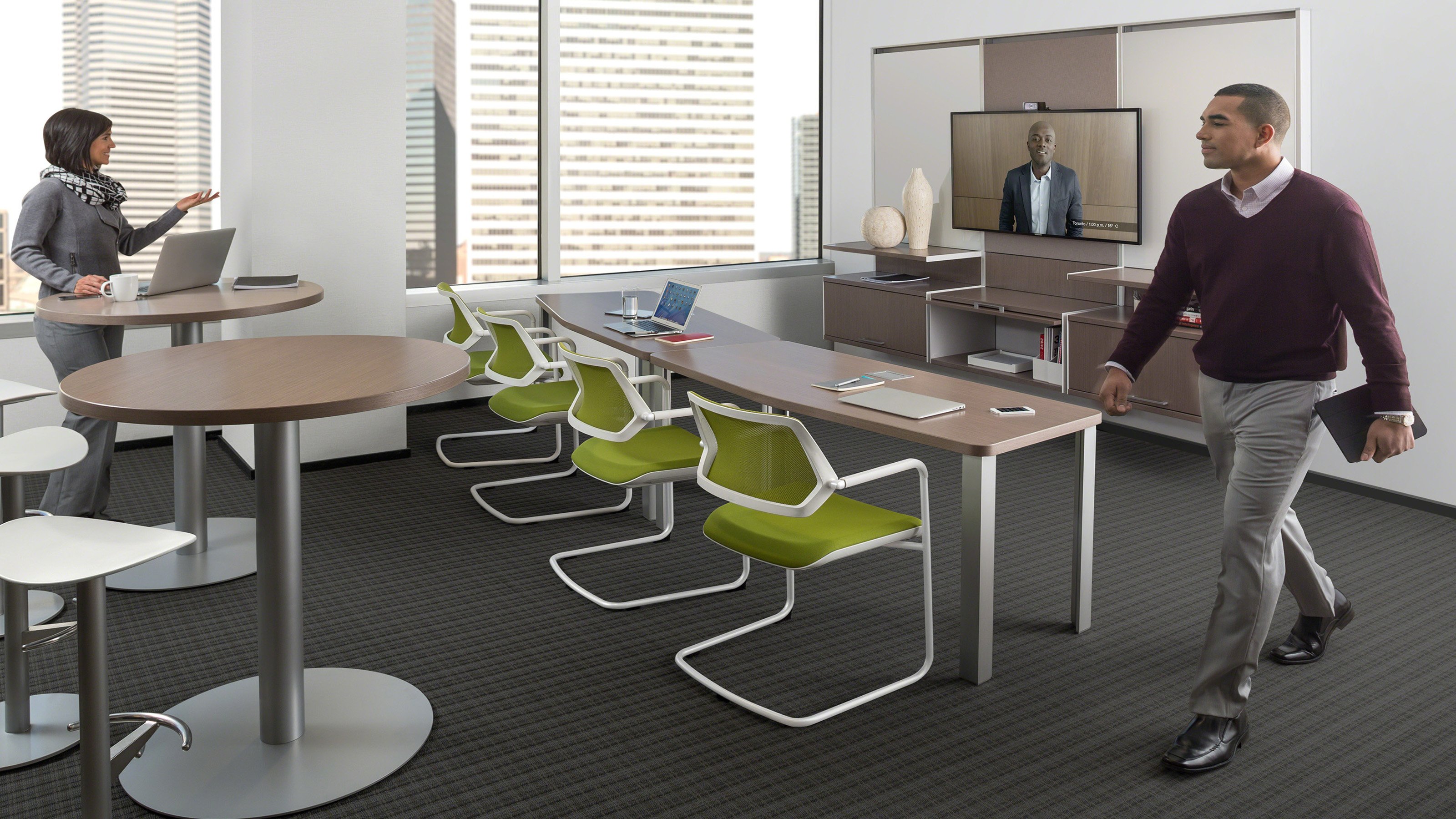Agile working and flexible working are two terms often used interchangeably, but they aren’t synonyms. They represent two different practices. One is geared at working in an iterative fashion to deliver better products and services to customers. The other aims to give employees personal choice about how they balance their work and home life.
But can and should flexible working be a feature of an Agile workplace? And if so, how can it work?
What is Agile working?
Agile is a radical approach to working which liberates teams from unhelpful bureaucracy and siloed processes, replacing them with a more fluid, collaborative and customer-focused mindset.
The approach was first pioneered by U.S. software developers in the 1990s to deliver complex IT projects faster and more iteratively through a greater focus on customers’ needs. Today, Agile is used to describe a number of dynamic, hyper-collaborative approaches to work that are practised in sectors well beyond IT and across the globe.
Agile is seen as a major way for businesses to gain competitive advantage in a world driven by commercial and technological disruption. And firms that are ‘Agile masters’ report 60% higher revenue and profit growth than non-agile firms.
The Agile mindset
The original Agile practitioners were software developers who had become frustrated with being distracted from their end clients by stiff and inflexible hierarchies of command and control.
So they rid themselves of the top-down management structures and linear processes and chose to work in fast, fluid and interdependent ways, as part of small, self-directed teams. Their goal was to deliver customer-centric software solutions as responsively as possible.
It’s this Agile mindset that McKinsey says can drive an organisation to:
“...renew itself, adapt, change quickly, and succeed in a rapidly changing, ambiguous, turbulent environment.”
Scrum
Scrum is the most widely practised Agile framework in the modern workplace. The framework was conceived and popularised by author and software developer, Jeff Sutherland.
In Scrum, work is broken down into a series of time-limited ‘Sprints’, bookended by group planning and review meetings. Daily ‘Stand Ups’ ensure teams can respond to changing customer needs in real-time.
“At its root, Scrum is based on a simple idea: whenever you start a project, why not regularly check in, see if what you’re doing is heading in the right direction, and if it’s actually what people want? And question whether there are any ways to improve how you’re doing what you’re doing, any ways of doing it better and faster, and what might be keeping you from doing that.” Jeff Sutherland
The Agile workspace

Many Agile businesses find they need to reinvent the space where they work to really deliver on its promise.
Agile working relies on constant collaboration between team members and clients and the ability to react quickly to problems if customer or market needs change. Many organisations have interpreted this to mean stripping away any physical constraints and creating an open workspace that enables flexibility, communication, and speed.
But as Sutherland points out, the open office can actually interfere with the ability of a team to operate efficiently while in the flow of a project.
Sutherland argues that the Agile workspace needs shared spaces where people can meet informally, spaces where they can work independently to focus on complex tasks, and spaces they can ‘huddle’ and work intensively in pairs or groups.
After all, it’s difficult to be Agile (in mind or body) when you find yourself fixed in one location, posture and work mode every day.
What is flexible working?
Flexible working is the practice of allowing employees to choose where and how they do their jobs, shaping their working days to fit around family and other work commitments. It is intended to create a more inclusive, diverse workforce that is healthier and happier.
Popular flexible working options include compressing your hours, adopting flexible start and finish times, and working from home. It’s a hot topic not just amongst parents, but amongst everyone from millennials to older employees, and even parliamentarians.
The benefits of flexible working
The benefits of flexible working are now widely recognised. For employees, flexible working means a better work/life balance and more control over their time, schedule and working environment.
In turn, businesses benefit from reduced absenteeism, improved morale, and greater productivity and performance from their employees. It also helps promote a positive image of the company as a people-centred place to work.
Research consistently shows that it’s become a top priority for employees; meaning the companies that don’t offer flexible working options risk losing out on the best talent.
- 70% of UK employees feel flexible working makes a job more attractive to them
- 92% of millennials say flexibility is a top priority when job hunting
- 80% of women and 52% of men want flexibility in their next role
- 30% would prefer flexible working to a pay rise
Is flexible working at odds with Agile?

In the past, practitioners have insisted Agile can really only happen face-to-face and with teams in close physical proximity to each other.
This is one of the key principles behind the original Agile Manifesto, which was created and signed by seventeen prominent software engineers back in 2001. One of the signatories of this manifesto was, in fact, Jeff Sutherland, the man behind Scrum.
“The most efficient and effective method of conveying information to and within a development team is face-to-face conversation.” The Agile Manifesto
It’s a principle that appears to oppose the trend towards flexible working. With more people working from home and away from the traditional 9-5 schedule, the opportunities to interact face-to-face are more sparse.
Many Agile practitioners recognise the face-to-face principle as being outdated and choose to view it with a more modern and progressive outlook. Face-to-face isn’t always the most efficient way to communicate, and an Agile mindset would mean choosing the method of communication that is best under a particular set of circumstances.
Flexible working as a feature of Agile
In reality, there’s no reason why flexible working can’t be a feature of an Agile workplace.
An Agile workforce can work from home and they can devise their own working schedule outside of the typical 9-5. The true nature of Agile is about having systems in place to allow employees to work from anywhere, at any time.
As one of the objectives of Agile is to maximise the efficiency of workers it can and should be part of the strategy by which you deliver on its promise.
By helping every member of your team work in ways that will improve their productivity and performance, you can retain the best and most qualified staff, while achieving greater flow and velocity as a business.
Towards ‘Distributed Agile’

Sutherland argues that the spaces used by Agile teams should be properly equipped to support flexible working, for example, video conferencing technology would give everyone a chance to contribute to meetings. And when you have so many people working different hours from each other or in different locations, when they do come together in the office, they need a space where they can get together.
Neither Agile working nor flexible working are going anywhere. The companies who offer flexible working policies and a workplace design that supports distributed teams, are likely to be the ones thriving in the future.









